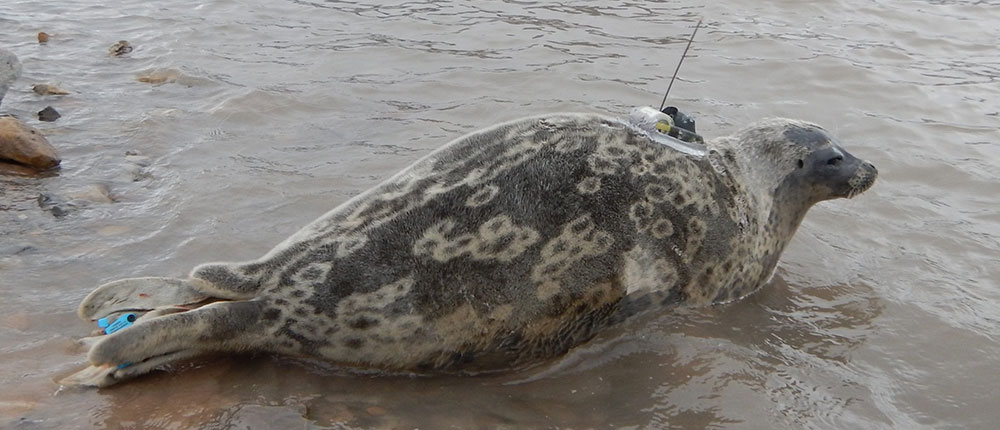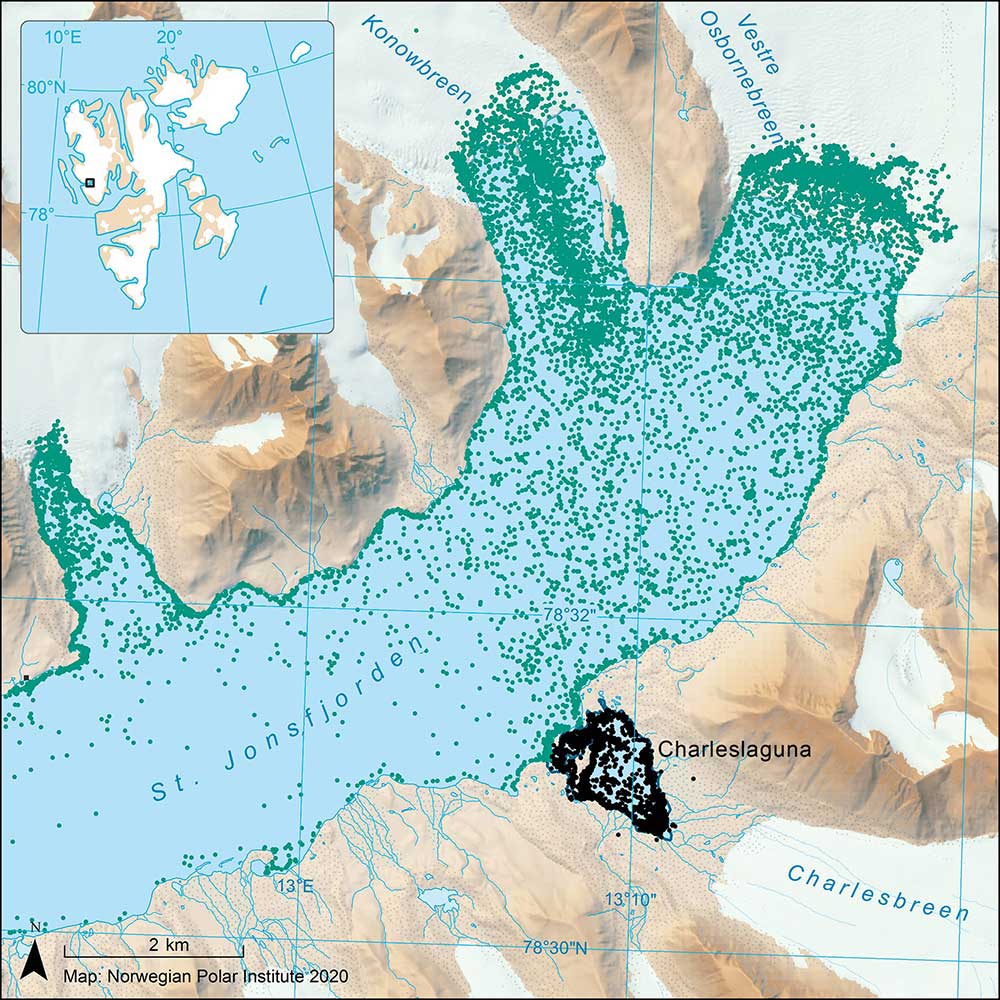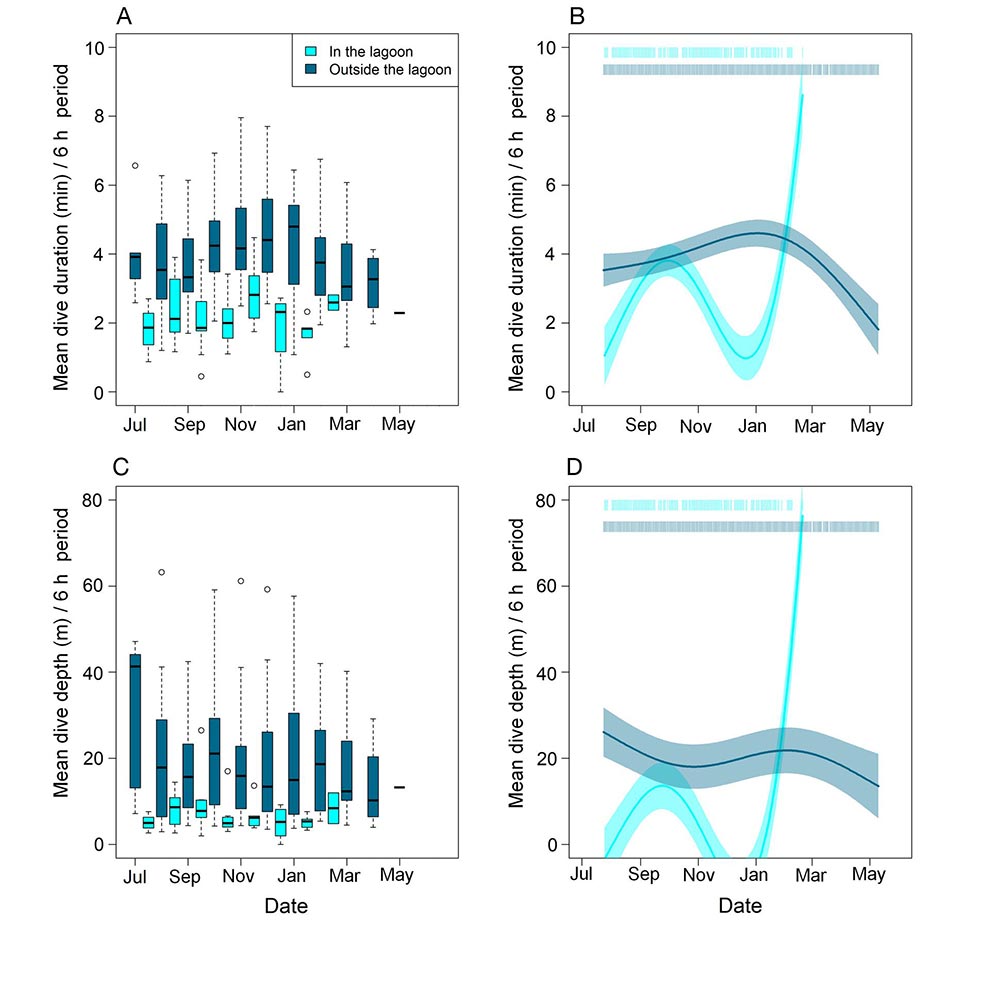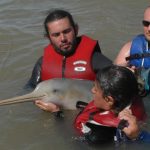← Back
Ringed seals in a Svalbard lagoon

Ringed seals are dependent on sea ice. Throughout the Arctic, including around the Svalbard Archipelago, sea ice is declining rapidly, thus threatening these seals. Their use of a coastal lagoon was studied over several seasons using Argos satellite telemetry, to examine if this kind of habitat could constitute a climate change refuge for them.
All Arctic endemic marine mammals are intimately tied to sea ice habitats. The best known, and probably the most emblematic, is the polar bear, but they are only one of many species that live in tight association with sea ice. Ringed seals are another sea ice dependent species. This small Arctic seal uses sea ice for resting, moulting and breeding, and they also forage on species that are themselves closely linked with sea ice, such as polar cod. In Svalbard, sea ice has declined rapidly over the past two decades, which leads to a growing conservation concern for ringed seals, especially given the limited adaptability and resilience that they have displayed to sea ice changes to date.
Lagoons are shallow bodies of water partially separated from the ocean by a barrier but they remain connected at least intermittently to the ocean. Arctic lagoons generally freeze up earlier and retain ice longer than adjacent ocean areas, since their shallow waters are brackish and they are sheltered from wave action. The ice habitats that lagoons offer may become increasingly important in a warmer Arctic for ringed seals, and other species that live in association with sea ice.

Tracking ringed seals from a lagoon
Charleslaguna is a lagoon in St Jonsfjorden, Svalbard, Norway that was created by the retreat of a glacier, the front of which is no longer in contact with the water. This coastal lagoon has a 90 m wide opening and a surface area of about 1 km2. Its depths have not been measured.
Twenty ringed seals were captured within the Charleslaguna lagoon and equipped with GPS CTD Argos-relay data loggers (http://www.smru.st-andrews.ac.uk/Instrumentation/GPSArgosCTD/) in 2012, 2016 and 2017. The seals were followed for an average of 188 days. The recorded data included information on the time spent hauled out, at the water surface and diving, mean dive duration and maximum depth per 6-hour periods. The deployment was done after the moulting period, when the seals replace all their hairs, since the loggers are glued to the hairs of the animals (so not until July).
A seasonal use of the lagoon by ringed seals
Among the 20 tracked ringed seals, 14 returned to use the lagoon in the three years of the study. One of the six which did not go back visited another lagoon (twice). There might be a bias, though, since all the all seals were initially caught inside the lagoon, so we were aware of that.
The 14 which did return in Charleslaguna spent an average of 8.9 % of their time inside this lagoon mainly in summer and autumn. Recorded dive data suggests that most feeding takes place in the fiord outside the lagoon. However some diving and also the fact that individuals stayed continuously inside the lagoon for 43 days suggests that some feeding takes place also here.

During late winter and spring, which is the breeding season for ringed seals, they did not use the lagoon. During this period the ringed seals are dependent on a place where they can dig out lairs within snow accumulations above their breathing holes. The pups are born inside those lairs, providing them with thermal shelter and some protection against predators. In Svalbard these sites are mainly found in areas where glacier pieces are frozen into the sea ice that enable enough snow to accumulate for digging out these birth lairs. Charleslaguna has very stable ice conditions, but lack structures around which snow can accumulate and are thus not used for breeding.
Studying marine mammal use of arctic lagoons
Thus, the Arctic lagoon habitat seem to serve as a refugia for ringed seals that provides sheltered areas for haul-out activities (resting and moulting) and to some degree as a food source, however they are not providing any ideal breeding habitat.
However, a greater understanding of the physical and biological attributes of these areas would be valuable, and trends in the use of lagoons by ringed seals and other ice-associated marine mammals should be monitored on a broad spatial scale in Svalbard to see if these habitats are of increasing importance as sea continues to decline.
Reference and link
- Vacquié-Garcia J, Lydersen C, Lydersen E, Christensen GN, Guinet C, Kovacs KM (2021) Seasonal habitat use of a lagoon by ringed seals Pusa hispida in Svalbard, Norway. Mar Ecol Prog Ser 675:153-16 https://doi.org/10.3354/meps13822
- https://www.npolar.no/en/species/ringed-seal/
Main Photo : A ringed seal equipped with a data logger is released inside Charleslaguna, Svalbard (credit Kit M. Kovacs )


